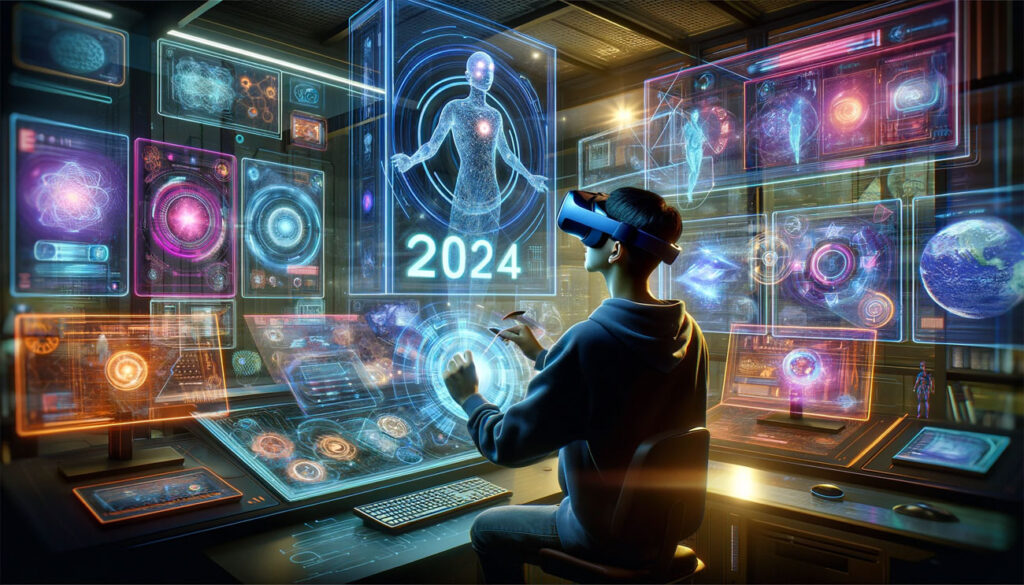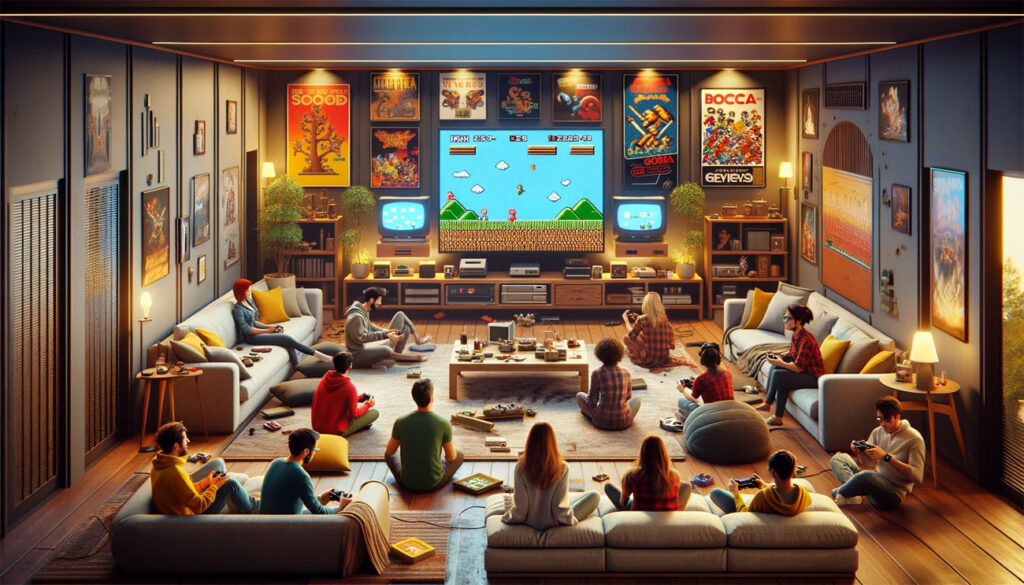We are at the final days of 2023, and it’s time to look forward to 2024, and the gaming trends we are expecting from it.
2023 marked one of the most dramatic periods in the gaming industry’s history. Notably, Microsoft’s acquisition of Activision Blizzard for a staggering $68.7 billion marked the largest deal the industry has ever seen, bringing under its wing monumental franchises like Call of Duty and World of Warcraft.
Beyond such huge deals, the industry faced some serious disruption. An estimated 8,000 job cuts reflected the harsh reality of downsizing as companies navigated through high inflation and previous over-expansions, among other challenges. And then there’s generative AI, which began reshaping the job market, especially for entry-level positions.
Despite these upheavals, 2023 wasn’t just about trouble. It was the year of the release of groundbreaking titles such as Baldur’s Gate 3 and The Legend of Zelda: Tears of the Kingdom, with an unprecedented number of games scoring 90 or above on Metacritic. This juxtaposition of peaks and valleys made the past year an intense ride of extremes, setting a dramatic stage for 2024’s gaming narrative.
What are we looking forward to in 2024 – in gaming and UGC?
VR and Gaming UGC in 2024

The integration of Virtual Reality (VR) stands out as an interesting trend for 2024. VR technology continues to evolve rapidly, with user engagement and development tools becoming more sophisticated and accessible.
The global VR market is projected to grow significantly. Overall, VR gaming revenues are projected to grow at a CAGR of 44 percent between 2019 and 2024. This growth is fueled by advancements in hardware, increased content availability, and a growing appetite for immersive experiences among users.
The rise in VR has opened new avenues for UGC. Platforms like VRChat and Rec Room have become hotspots for users to create and share their own worlds, games, and experiences. These platforms have reported substantial increases in user numbers, with VRChat, for example, hitting record concurrent user numbers in recent years, often peaking at over 40,000 users at a given time.
Investment in platforms supporting VR UGC is on the rise. For instance, Facebook’s $10 million VR Creator Program aims to encourage innovation and content creation in the Oculus ecosystem.
Users are not just looking for games but also for social, educational, and creative experiences. The demand for diverse and quality VR content is higher than ever, paving the way for creators to explore and fill these niches.
Multiplayer experiences are expected to remain at the core of VR gaming. Titles like Gorilla Tag, a game where players move by simulating hand movements, have become surprisingly popular, attracting millions of daily users.
Similarly, the VR survival game Ghosts of Tabor, drawing inspiration from games such as Escape from Tarkov and DayZ, continues to expand its fan base during its Early Access phase. As we move forward, anticipate a wave of creative approaches to VR multiplayer, especially as Meta Quest 3 establishes itself as a leading platform and its parent company, Meta, focuses on enhancing community-driven features in VR gaming.
Gaming UGC and AI
Taking a quick look at the gaming scene, it’s clear that user-generated content (UGC) is a big hit, especially in popular games like Roblox, Fortnite, and Minecraft, beloved by the 8-15 age group.
Many games are offering creative modes and tools and they are becoming more widespread. Expect to see more games embracing UGC, especially with advancements in AI. The combination of AI and UGC is promising, though it also raises important discussions about ethical use of AI in development and its impact on jobs and content quality.
Adventurous modders are already using AI in innovative ways, like incorporating ChatGPT into Skyrim. This points to a future where AI could make content creation easier and more accessible, inspiring a wider audience to get involved in gaming.
This trend is leading to more collaborations between brands and content creators, particularly with the rise of platforms like TikTok. As it becomes easier to create and share content, the gaming world is set to become even more diverse and creative.
Looking forward by looking back
Another red-hot trend to look out for in 2024 is retro gaming and remakes. Nostalgia is set to be a major draw, as players continue to flock to updated versions of their favorite childhood memories. The flourishing of retro gaming is not just about reliving the past – it’s about enhancing it with the technology and design sensibilities of today.

Recent years have seen a surge in beautifully remastered editions of beloved games. For instance, “Final Fantasy VII Remake” transformed the iconic RPG with stunning modern graphics and a revamped combat system, while “Resident Evil 2” and “3” have been completely reimagined, offering a fresh and terrifying experience to both new and returning players.
The trend extends beyond remasters to include reboots and spiritual successors that capture the essence of classic titles. “Crash Bandicoot 4: It’s About Time” revived the beloved platformer series, staying true to its roots while introducing new gameplay mechanics. Similarly, “Streets of Rage 4” brought back the classic beat ’em up franchise with updated visuals and smooth combat, pleasing fans old and new.
As we move into 2024, the gaming industry is set to deliver even more of these nostalgic experiences, blending the familiar joy of retro games with the possibilities offered by modern gaming technology.
